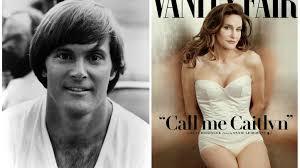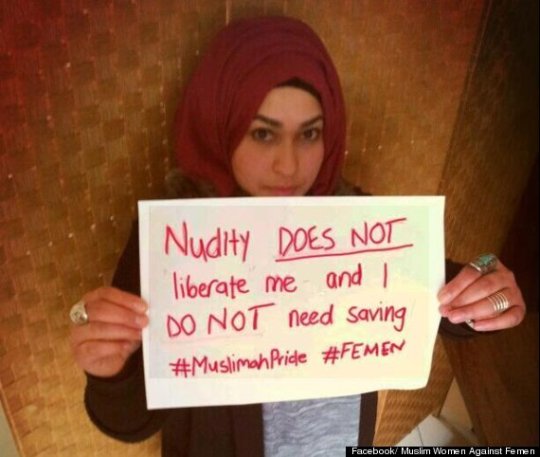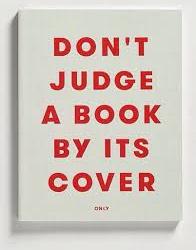Text
Reflection
This class has been eye opening to say the least. I had always been under the assumption that being a woman and succeeding was enough; I never gave much attention to the struggles that women as a whole encounter, the idea that some women have to work even that much harder never occurred to me. In the modern day, being a feminist is not enough. Intersectionality is a reality and because of that we must be humanist with an emphasis on WOMEN! How do we do that? Is it done by unveiling the middle east? Probably not. How about by closing the wage gap? That could certainly help, but still is not enough. We have to retrain our brains and the culture in which we are raised in. One way of doing this is through storytelling, and no, not the stories you want to hear but the ones that are difficult to tell and even harder to read.
In the readings and TedTalks from the class we could see the idea of this intersectionality starting to form (figuratively of course, this kind of bias has been around for generations). How many times have women been subjected to a single story? I know I'm guilty of doing it to other women. Thinking to myself that if I pushed through the sexism then why can't they? Well because sometimes is more than just the gender or even the race that creates obstacles. Chimamanda Adichie talks about the perceptions her roommate had of her in her TedTalk The Dangers of a Single Story. These prejudices had nothing to do with her gender or race, but because she was from Nigeria it was assumed her english would be poor and her music more indigious. How often have we made judgements in our own minds about someone who looks different then those in our inner circle. In Adichie's story it wasn't even her outward appearance that got her labeled as less, it was the country, community and culture that assigned her identity long before her physical self. Her birthplace became her single story at that moment, but the reality is english was her native language and she loved Mariah Carey! It's this type of pitying stereotyping that can be so damaging, especially in a country made entirely of immigrants.
In my opinion muslim women have it the hardest in the eyes of intersectionality. I also believe they are the most misunderstood and misinterpreted group that we talked about. Lets cover the intersectionality part first, because it is very different depending on what part of the world they are located in. As Americans we all put up a guard against muslims on September 11, 2001. We began to tell ourself the same story about every muslim we saw. In America it became painful to be a mulism overnight. Many women from this population are easily identified by the color of their skin and a hijab covering their heads. This is now a group of women who have so many odds stacked against them, especially in the American culture. Its the single story of these muslim women that so many of us lump into a single idea when we think of them in their native country. I cannot speak from experience about what it is like to be a woman in radical muslim country, but I think we can all agree we’ve seen news coverage and shocking headlines that gives us an idea of the grim reality that so many women in those positions must feel and be going through. This brings me to the misunderstood part. Now there is absolutely no doubt that women of the middle east (that are normally muslim) have been opressed for many years. Unfortunately, we assume that hijabs is an external show of that oppression. Lughod’s Do Muslim Women Really Need Saving? paints a very different reality than the one many Americans make in their heads; showing how damaging ill-informed readers can be on a single story. Another example we saw of this is Mogahed’s What It’s Like to be Muslim in America. Her account of what it was to be a well educated muslim in America after the 9/11 tragedy was a harrowing example of how easily our bias can be swayed. After that day, muslim people were minimized not to a single story but a single act of violence.
Now that I’ve laid out some of the largest issues which we discussed in class, I want to talk about how they apply to each of the books we read. While both books were interesting reads and each protagonist had their own struggles, it can not be overlooked that religion had a major role as co-star in each. This has my mind thinking about how many real life stories are impacted by a religious villain; it can take the form of stereotypes but also it can impact the way you see the world around you. Okparanta Under the Udala Trees was a story of a girl who faced hardship after hardship in her life. Losing her father in the beginning and then her mother(not literally in this instance but the divide between them shattering their bond), lastly, feeling betrayed by religion because of her sexual preferences. She lived in a country in which homosexuality was not accepted, mkaing her question her own skin while her beloved mother tried to use the bible to teach her a virtuous life. I think we so often think about how our communities and cultures discriminate against women and race and religion, that we forget that sexual preference is something that commonly is not tolerated within families and close friends. This is one thing I wish we would have explored in more detail, since internal sexism and discrimination was present in both books, is just damaging these are in adding to the single story. The idea of how the ‘author’ of the single story may be impacted by these principles within their own home not just their own community. Peri, which was the lead character in Eli Sharfak Three Daughters of Eve battled with religion and sexism among other things. When reading this book its easier to understand why the world makes these assumptions about oppression in muslim centered countries. I can also imagine how empowering this story would be for a person who is in a similar situation. Peri had the opportunity to step out of her community and into a more tolerant open minded one at Oxford. She also had the advantage of being well educated. To the average American this doesn't seem like much of an advantage, but it is. Women in muslim communites have started closing the gender gap on education. (Murphy, 2016) That’s an important fact when fighting for equality worldwide. Higher education can mean better jobs, better salary, and more independence for women. Peri was able to stand up for herself at the dinner party because she had the knowledge to do so.
Earlier I talked about shifting the culture to end inequality, and to do that we have to change the way we think about situations. The gender divide is ingrained in us from a young age; sayings like “you run like a girl” and “thats so gay” are derogatory but yet every child has heard them and most have said them. Most children are raised in a home where the mother is the homemaker and the father is the breadwinner. It's these things that are not taught and that make up are individual stories that are so limiting, so dangerous. Aristotle's moral theory deals with habits; virtue is practiced and mastered. If that's the case then we have to change our habits and teach our youth differently. When i read these books and listened to these stories I couldn't help but think how difficult it would be to have conversations on these topics frankly. That's the thing about it, ‘the gift of good literature is that it begins difficult conversations.” What are those difficult conversations for you? When was the last time you told a story that evoked a conversation that started a revolution? I had an experience while in the military that wouldn't allow men and women to stand 24 hour watch together. This resulted in the women of that station to have more watches because there were more of them. When i saw this i couldn't help but think how unfair this was, these women were being given more work for no other reason than being female. I took a stand, this was sexism in my military and I wouldn't just accept it. I stood up to the leadership and demanded equal watches for all sailors. It took two years of adjusting the policy, but ultimately the separation of the sexes was dissolved. That was where my single story as a femisnist begun.
If you had a single story, what would it be?
“The impression she left on others and her self-perception had been sewn into a whole so consummate that she could no longer tell how much of each day was defined by what was wished upon her and how much of it was what she really wanted.” -Elif Shafak
0 notes
Quote
A girl should be two things: who and what she wants
Coco Chanel
A girl should be these two things, not whatever story the world has assigned her. Look past the basics. We are women. Hear Us Roar!
1 note
·
View note
Photo

This is exactly why single stories are so dangerous. If you were to look at either version of Jenner you could easily make assumptions. Without ever peeling back the layers you could be missing the good stuff thats underneath.
1 note
·
View note
Photo

At first sight I thought, well obviously...but then i thought about it and I thought what does this mean for our class. Its easy to stand up and say I'm against judgment and oppression of anyone, I’m against discrimination at any level...but what am I for? I stand for fair treatment of all and I stand for anything that promotes women...of any color, race or religion...to be their best version!
0 notes
Photo

I think this says what some many need to hear. In some cases we cannot dispute stereotypes, but better understanding them and understanding that someone is more than just what we judge at face value. We we listen to stereotypes, we hear the wrong story.
1 note
·
View note
Quote
The feminism that has mattered to the media and made magazine headlines in recent years has been the feminism most useful to heterosexual, high-earning middle- and upper-middle-class white women. Public ‘career feminists’ have been more concerned with getting more women into ‘boardrooms’, when the problem is that there are altogether too many boardrooms, and none of them are on fire.
Laurie Penny, Unspeakable Things: Sex, Lies and Revolution
This speaks to me and our class. So many times I say that feminist have a PR issue, but it hasn’t been for this reason. I have come to realize I could be part of the problem. Ive got to rewire to think of intersectionality rather than just feminism.
(via womenwritingsu2020)
3 notes
·
View notes
Photo

This!! Yes! It is possible to be covered and not need saving! I think we tend to box in what we believe are these wonderful feminist values without regard to A. how other counties actually function and B. some women prefer modesty. And this goes far beyond the middle east! As an American woman, I often find feminist marches obscene and offensive. Just because we can doesn’t mean we should. #coverthemthingsup
4 notes
·
View notes
Photo

I think this is fitting for what we have read…if only Ijeoma was willing to wear this sign. She could be apart of the force that knocks down barriers rather than continue to shield the personal ones she keeps within.
2 notes
·
View notes
Quote
Some people want to change the world; others, their partners or friends. As for me, I would love to change God. Now that would be something; wouldn’t everyone in the world benefit from that?
Three Daughters of Eve Elif Shafak (via womenwritingsu2020)
This summed the book up for me. Peri wants nothing else than to make God fit her world. i can relate
4 notes
·
View notes
Photo

Are we all guilty, DUH! Doesn’t make it right. I believe Mary Poppins said it best “the cover is not the book.” We can not limit ourselves to what our cover says about us. Don’t limit yourself by a cover, a chapter, or a single story.
6 notes
·
View notes
Photo

I love this. This is a classic example of the internal judgement we make against people; similar to what Mogahed talked about. What we see on the outside isn’t always descriptive to whats on the inside.
3 notes
·
View notes